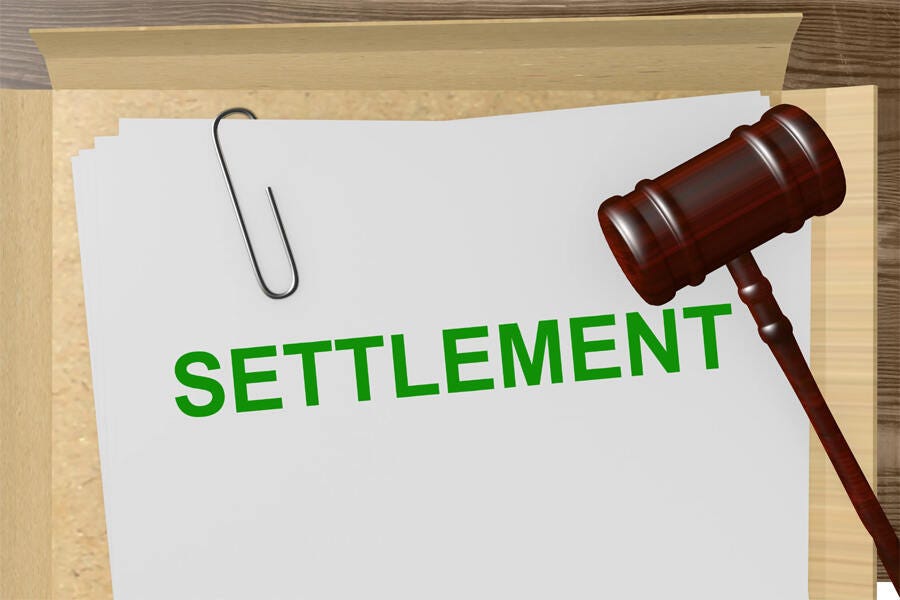When it comes to handling financial difficulties, one of the most significant challenges for borrowers is dealing with unpaid loans. For many individuals, the mounting pressure of loan repayments, coupled with the stress of potential bank harassment, can feel overwhelming. Fortunately, there are loan settlement options available that can help ease this burden and help borrowers regain their financial footing. In this blog post, we will cover the top 5 rules every borrower should know about bank loan settlement.
What is Bank Loan Settlement?
Before diving into the rules, let’s first understand what loan settlement means. A bank loan settlement is a process where a borrower and a lender agree on a reduced payment amount, settling the outstanding debt. Instead of repaying the full loan amount, the borrower may be able to pay a portion of it (often less than what was originally owed), and in return, the bank agrees to forgive the remaining debt.
Bank loan settlements are typically used in cases where the borrower is facing significant financial hardship and cannot continue making full loan payments. It is important to note that loan settlement is not an automatic process, and banks are not required to offer this option. However, with the right approach, borrowers may be able to negotiate a settlement that works in their favor.
Rule 1: Assess Your Financial Situation Honestly
One of the first steps in any loan settlement process is to evaluate your financial situation. It’s important to be realistic about your ability to repay the loan and determine the exact amount you owe. Gathering this information will give you clarity on whether you’re eligible for a loan settlement and what kind of terms you might be able to negotiate.
To get an accurate picture of your finances, consider the following:
List of Outstanding Debts: Identify all of your current debts, including the loan you want to settle. Include credit card bills, personal loans, car loans, and any other obligations you may have.
Income and Expenses: Document your monthly income and expenses. This will help you understand how much you can afford to pay toward the loan settlement.
Assets: Take stock of your assets, including savings, property, and investments. Some lenders may ask about your assets as part of the settlement process.
Having a clear understanding of your finances can also help you assess how much you can offer in a settlement and whether a debt settlement is a realistic solution. If your financial situation is dire, it might be beneficial to consult with a financial advisor or a debt settlement professional before proceeding.
Rule 2: Understand the Impact of Settlement on Your Credit Score
Loan settlement can significantly impact your credit score. When a loan is settled for a lesser amount than what is owed, it’s marked as “settled” or “paid as settled” on your credit report, which is less favorable than a “fully paid” status. This could affect your ability to secure future credit, such as mortgages, auto loans, or personal loans, and could lead to higher interest rates on future borrowing.
However, a settlement is generally less damaging to your credit score than defaulting on the loan entirely or going through foreclosure or bankruptcy. Some borrowers may see an improvement in their credit score over time if they continue to manage their finances responsibly after settling the loan.
To minimize the negative impact on your credit, consider the following:
Negotiate the Terms: When negotiating a settlement, you may be able to request that the lender reports the loan as “paid in full” instead of “settled” or “partially paid.” Not all lenders will agree to this, but it’s worth asking.
Work with a Credit Repair Professional: After settling the loan, consider working with a credit repair professional who can help you rebuild your credit score and improve your financial standing.
It’s crucial to weigh the short-term effects on your credit score against the long-term benefits of eliminating debt. If settling the loan allows you to move forward financially, it may be worth the temporary dip in your credit score.
Rule 3: Know Your Rights and Avoid Scams
When dealing with loan settlements, it’s important to understand your rights as a borrower. Many individuals who are struggling with debt face harassment from banks and collection agencies. However, consumer protection laws exist to safeguard borrowers from abusive practices, and you have the right to demand fair treatment throughout the settlement process.
Some key rights that borrowers should be aware of include:
Protection from Harassment: Under laws like the Fair Debt Collection Practices Act (FDCPA) in the U.S., lenders and collection agencies are prohibited from using harassment, threats, or unfair practices to collect debts.
Right to Negotiate: You have the right to negotiate a loan settlement with your lender. The bank is not obligated to accept an offer, but you can propose a reduced amount based on your financial situation.
Avoiding Scams: Unfortunately, there are many companies that prey on borrowers in financial distress by promising quick and easy loan settlements for an upfront fee. Be wary of such offers, as many of these organizations are scams. Only work with reputable professionals who have experience in loan settlements and can guide you through the process.
If you feel overwhelmed by the bank’s actions or face any form of harassment, you may want to consult with a lawyer or a financial professional to ensure your rights are upheld. Additionally, if you are dealing with a fraudulent company, you should report them to your local consumer protection agency.
Rule 4: Consider the Timing of the Settlement
Timing plays a crucial role in the loan settlement process. Ideally, you should start negotiations as soon as you realize you will not be able to continue making full loan payments. Settling a loan early on in the default process may allow you to negotiate a better deal, as the bank is less likely to have incurred significant collection costs.
Here are some timing tips to consider:
Before Defaulting: If you are falling behind on payments but have not yet defaulted, it may be easier to negotiate a settlement before the account goes into default status. Once a loan is in default, it may be more difficult to negotiate favorable terms.
During Default: If you’ve already missed several payments, the bank may be more willing to settle, especially if it believes it will be unable to recover the full debt. However, keep in mind that the longer you wait to settle, the more likely the bank will have incurred additional fees and costs.
At the End of the Loan Term: In some cases, if you are at the end of your loan term and there is still an outstanding balance, you may be able to negotiate a settlement for a lump sum amount that is less than the remaining debt.
Be mindful that your ability to settle the loan may also depend on the type of loan you have. For example, secured loans (like home loans) may be more challenging to settle because the bank has the option to seize the collateral. Unsecured loans, such as personal loans or credit card debt, are often more flexible in terms of settlement.
Rule 5: Get Everything in Writing
Once you’ve reached a loan settlement agreement with your lender, it’s essential to get all the terms of the settlement in writing. This protects you from future disputes and ensures that the agreed-upon terms are clear and enforceable. The written agreement should include:
Settlement Amount: Clearly state the reduced amount that you have agreed to pay to settle the loan.
Payment Terms: Specify the payment schedule, including the due dates, amount of each payment, and the method of payment.
Full Satisfaction of Debt: The agreement should state that once the settlement amount is paid, the debt will be considered fully satisfied and that the lender will not pursue any further collection actions.
Impact on Credit: If possible, negotiate for the loan to be reported as “paid in full” instead of “settled” or “partially paid.” Make sure this is reflected in the written agreement.
Waiver of Future Claims: The agreement should include a clause that the bank waives any further claims against you once the settlement is paid.
Be sure to read the agreement carefully and seek legal advice if needed before signing it. Once you’ve made the payment, ensure that the bank provides you with confirmation that the loan has been fully settled.
Conclusion:-
Loan settlement can provide a lifeline for borrowers who are struggling to repay their loans. By understanding the key rules outlined above, you can approach the settlement process with greater confidence and avoid costly mistakes. Remember to assess your financial situation carefully, understand the impact on your credit, and know your rights. Always be wary of potential scams and ensure that any agreement is documented in writing to protect your interests.
If you’re considering loan settlement, it may be worth consulting with a debt settlement professional or attorney to help guide you through the process and ensure that you get the best possible outcome. By following these rules, you can take control of your financial situation and work toward a debt-free future.
Get in touch with us today at www.Settleloan.in and embark on your path to financial freedom



